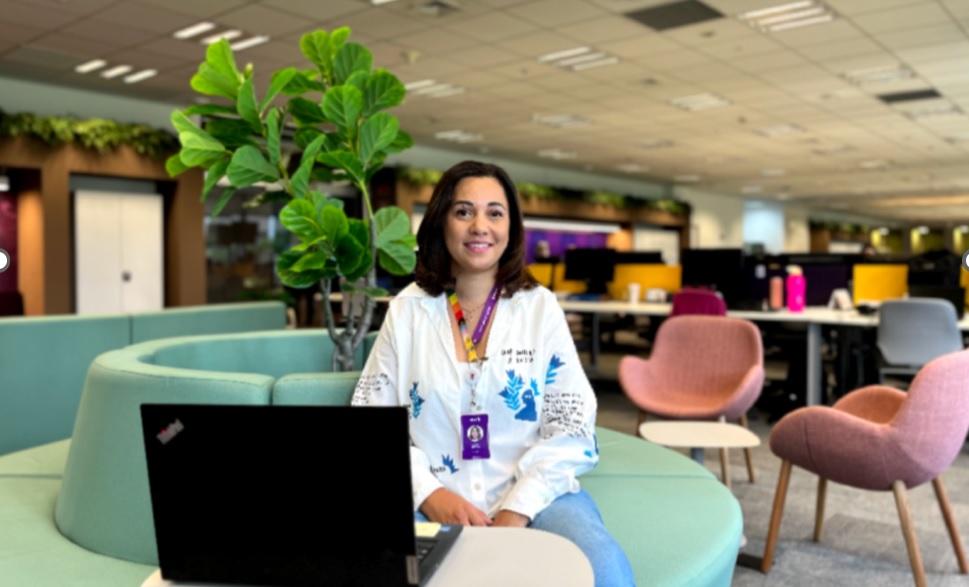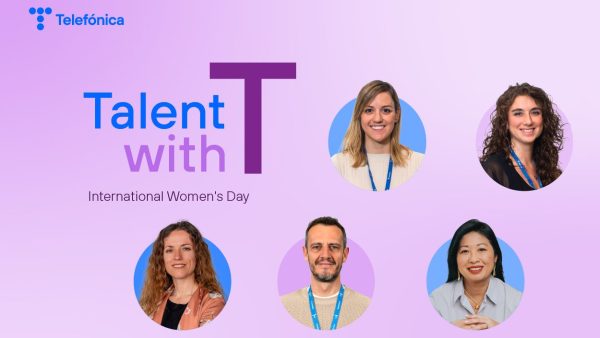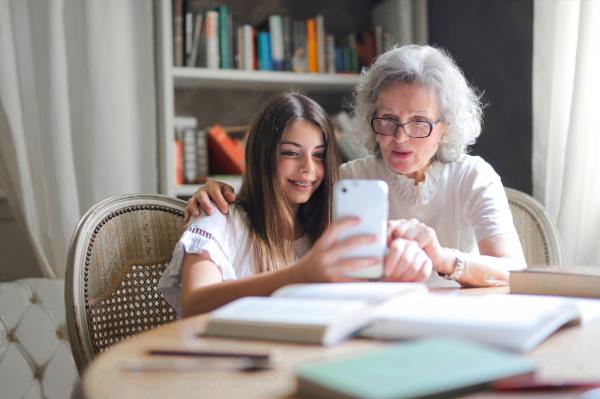In this way I began to have a moderate degree of impairment, which in the last year moved from the stage of calcification to decomposition, leaving me severely deaf.
Living with this invisible disability is a big challenge. I often hear phrases like “you don’t look deaf” or “how can you speak and be hearing impaired“. Another very interesting phrase is “I told you so, didn’t you hear?” and “being deaf you should know how to speak sign language“. They seem like simple sentences, but they are so loaded with unconscious bias.
People really expect a hearing impaired person to look like a “poor thing”, which is very sad. Deafness is an invisible and heterogeneous disability, and most people with deafness in Brazil, my country, and in the world, do not use Sign Language, because to speak this language it is essential to communicate with signalled deaf people and not so much to communicate with spoken deaf people.
I place myself in this second group, those of us who at some point have developed diction and learned to speak the official language of the country. The Brazilian Institute of Geography and Statistics (IBGE) itself recently rectified information collected up to 2019 on the number of deaf people in Brazil and confirmed the importance of updating the parameters, modifying the research questions.
New hearing technologies
The differential of the new research for the universe of hearing impairment was to investigate the use of hearing technologies and knowledge of Sign Language. This is fundamental for guiding public policies, as it is quite common to use the 2010 IBGE Census data to claim that Brazil has 10 million speakers of Libra, which is the Brazilian Sign Language. However, until 2019, the survey did not provide information on how hearing impaired people communicate. The 2019 National Health Survey (PNS) was more precise in relation to the particularities of people with disabilities.
Hearing loss in Brazil
I invite you to look at the current landscape and understand how this affects the recruitment and working life of a hearing impaired employee.
The PNS revealed that about 1.3% of the Brazilian working-age population is hearing impaired. However, this rate is lower when considering only the employed and unemployed population (0.6%, or 578,000 and 60,000 people, respectively).
In relation to the use of assistive listening devices such as hearing aids and cochlear implants, the research revealed that only 0.8% of the population over 2 years of age use these devices. However, the survey data showed that, among the elderly, the percentage of people using resources for better hearing is 3.1%.
This information is crucial for guiding public policies to meet the needs of the hearing impaired population. However, it should be noted that, so far, public policies have provided little help to the hearing impaired who, in order to maintain their quality of life in society, need surgeries and/or hearing aids.
Like me, many people face bureaucracy in Brazil’s public health care, the Unified Health System (SUS), throughout a process that can take years. Unfortunately, we are faced with endless queues and consultations in search of the possibility of a surgery or hearing aid guarded by public health, something that should be a basic right and easily accessible to the Brazilian citizen. The Minister of Human Rights and Citizenship, Silvio Luiz de Almeida, current president of the Luiz Gama Institute (a human rights organisation dedicated to the legal defence of minorities and popular causes) has worked to change this reality in the country. However, the bureaucracy in the public health system is still enormous.
Oral Deaf population – How many of us are there?
The Locomotiva Institute released a survey that revealed the following data:
- 10.7 million people have some degree of hearing loss.
- 2.3 million have severe or profound hearing loss.
- 54% of men and 46% of women.
- 43% are under the age of 60. I am part of this 43%!
Financial challenge to retain PcD talent
Therefore, research data can, and should, guide changes in the system to ensure that the needs of individuals with disabilities are met more effectively and fairly. While this is not happening, as I mentioned in my previous article “Public health in Brazil does not have everything a person with a disability needs to bring this disability with less impact on their life”.
There is a big conflict here when it comes to retaining disabled talent in an organisation, as the salary and health plan offered in exchange for working hours are not sufficient to cover the costs of equipment such as hearing aids, cochlear implant surgeries or other prostheses in general.
This makes it difficult for people with disabilities to stay in the organisation, as they need to deal with additional expenses that end up compromising their quality of life. I myself, after more than two years in SUS treatment, still face the bureaucracy of the Brazilian public health system and non-transparent processes in trying to get a hearing aid or surgery.

To give you an idea, a hearing aid with four microphones, used to improve sound pick-up in corporate environments, currently costs around 4,000 euros.
Therefore, as has been proven, in Brazil, companies that understand their role in society take the lead in issues that the government has not yet managed to support the citizen. They are companies, such as Vivo, that go ahead and implement policies that take into account the specific needs of their employees, offering benefits that make it possible to keep these professionals on their staff. They are companies that manage to create a more inclusive and diversified work environment, as well as implementing equity measures to ensure that these professionals, like everyone else, have the same opportunities for growth and development in their careers.
This is an issue that still needs to be assessed very cautiously, knowing that for the purposes of return and career support for PCD talent, it is important to consider that financial hardship is as significant as an inclusive, diverse and empathetic environment.
What is it that you can’t understand with survey data?
With just one question it is difficult to understand the universe and peculiarities of hearing loss in the country.
Deafness, being an invisible disability, is often not understood by society due to the lack of general knowledge about this condition. I am currently studying Institutional Communication and when analysing data on the legislation for the hiring of people with disabilities, it becomes evident that the selection process for these individuals is in transition and still has a lot of progress to make in Brazil.
Although some companies have already implemented a comprehensive and dedicated directory to meet the recruitment needs of PWD, most do not have such a structure in place. Moreover, on the frontline of hiring employees with disabilities, the lack of knowledge and understanding is alarming.
Often, those responsible for recruitment and management do not even know how to differentiate between an act of empowerment and an act of need for equity, nor do they understand the importance of inclusion and equal opportunities.
In short, an inclusive and equitable environment must be created, with a view to harnessing the skills and abilities of all individuals. In addition, it is essential that clear and effective guidelines for inclusion and diversity are implemented, which should support the retention and development of all employees.
In addition, those responsible in companies for the recruitment of people with disabilities need to be trained and understand all the particularities of inclusion. These actions can benefit not only people with disabilities, but also all staff and the organisation itself.
Learning to cope with invisible disability
As a result, millions of people are remorselessly harmed by individuals ignorant of the issue. People often fail to overcome the difficulties that arise in the daily lives of those who are deaf. Talking on the telephone, understanding human speech in noisy environments, participating in work meetings, understanding a simple conversation with several people, or the absence of subtitles, are just a few examples.
Many are also unaware of how hearing aids work and mistakenly believe that they can “cure” deafness and solve all the problems of individuals with this condition.
When opening up employment opportunities for a hearing impaired person, it will be necessary to invest in training for the whole team in relation to deafness. It is important that we all take on the role of informing, educating, self-educating about the conditions and needs for inclusion with equity.
Injustices suffered by deaf people
The discrimination faced by deaf people, although invisible at first glance, is widespread and severe. It is important to highlight the difficulties faced in promoting equity policies that address the needs of the hearing impaired, whether they are signalled or spoken.
Conversation wheels, lunches and meetings can be challenging for hearing impaired people. While a signalled hearing impaired employee needs a sign language interpreter to accompany a conversation until colleagues learn the language, an oralised hearing impaired worker may understand less than half of the conversation, as they are in the midst of various noises that detract from the clarity of the conversation.
Social isolation is one of the critical points when it comes to hearing impaired people. No one can keep an off-frequency radio on all day in their ear. Excess noise creates discomfort and causes deaf people to seek out individual conversations and less noisy places, which can lead them to be seen as antisocial by those who do not understand the need.
Room acoustics can also be a problem, so the hearing impaired employee will try to sit in a corner of the room where the acoustics will retain sound. In some places, even the sound of air-conditioning motors, computer fans can make understanding difficult.
In situations like this, and many others, this type of person lives in social isolation. That is why it is important that equity policies are created and adopted by everyone, to guarantee their rights and quality of life.
Sign language
Libras, or Brazilian Sign Language, is an example of a language that is used for communication between hearing impaired people in Brazil. Many people believe that Libras is universal, but this is not true.
There are several Sign Languages around the world, each with its own variations and regionalisms. Libras has been a recognised language by law in Brazil since 2002, but before that, hearing impaired people were forced to adapt to the oralisation regime, which impacted on their education and development.
Thanks to the struggle of activists and educators of the deaf cause, Libras was recognised as a language of Brazil. Libras has its origins in French Sign Language (LSF) and was created together with the National Institute for the Education of the Deaf (INES). It is important to note that Libras has regionalisms and variations, as well as in Portuguese.
For example, the sign for “single” is different in northeastern and southern Brazil. These variations occur on the basis of the difference in generations, cultures and geographical regions.
Sign languages are extremely important for deaf people, as they enable them to communicate efficiently and inclusively. Unfortunately, many people have difficulties with written languages, which makes sign languages a viable alternative for communication.
In addition, sign languages are also used by people with other disabilities such as autism, down syndrome and cerebral palsy. Hand Talk App is a free app that works as a pocket translator for sign languages, both for pounds and ASL (American Sign Language). With the help of the virtual translators, Hugo and Maya, the app performs instant translations from English to ASL and Portuguese to Pounds.
In addition, the app also teaches in an easy and didactic way how to point. So, if you live with deaf people, take the opportunity to learn more about sign languages and communicate in an inclusive way with the help of the Hand Talk App.
What to do with this data?
To demystify the idea that deafness is exclusively associated with sign language, it is essential that we consider a wide range of these facts and use them in formulating policies to ensure equal accessibility for all groups of people with hearing loss.
Now you know that the role of a sign language interpreter is important, but it is not enough. It is essential to invest in features that improve acoustic quality, such as the Magnetic Ring, the remote microphone and the FM System. Similarly, recorded or live subtitles, on digital platforms, TV programmes or in the cinema as well, are essential to meet most of the needs of hearing impaired people.
As active citizens, we need to demand our rights to accessibility in all aspects of life, from the labour market to the health service. Only then can we ensure that people with hearing loss have full access to communication and opportunities.











